-
 Bitcoin
Bitcoin $106,437.2012
0.82% -
 Ethereum
Ethereum $2,442.5287
0.82% -
 Tether USDt
Tether USDt $1.0005
-0.02% -
 XRP
XRP $2.1812
-0.27% -
 BNB
BNB $645.1327
0.45% -
 Solana
Solana $146.2379
0.39% -
 USDC
USDC $0.9999
-0.01% -
 TRON
TRON $0.2751
0.92% -
 Dogecoin
Dogecoin $0.1662
-0.23% -
 Cardano
Cardano $0.5827
-1.22% -
 Hyperliquid
Hyperliquid $37.5225
0.04% -
 Bitcoin Cash
Bitcoin Cash $479.0877
4.02% -
 Sui
Sui $2.7846
-3.27% -
 Chainlink
Chainlink $13.3576
0.84% -
 UNUS SED LEO
UNUS SED LEO $9.0252
-1.20% -
 Stellar
Stellar $0.2455
-1.07% -
 Avalanche
Avalanche $18.0680
-1.81% -
 Toncoin
Toncoin $2.8948
-1.07% -
 Shiba Inu
Shiba Inu $0.0...01164
-1.65% -
 Litecoin
Litecoin $85.0637
-0.06% -
 Hedera
Hedera $0.1526
-0.89% -
 Monero
Monero $316.2941
0.78% -
 Ethena USDe
Ethena USDe $1.0003
-0.04% -
 Polkadot
Polkadot $3.4113
-1.87% -
 Dai
Dai $1.0000
-0.01% -
 Bitget Token
Bitget Token $4.4488
5.16% -
 Uniswap
Uniswap $7.1740
3.09% -
 Pi
Pi $0.5968
11.43% -
 Pepe
Pepe $0.0...01010
-0.65% -
 Aave
Aave $264.3189
0.40%
Is it a shipment if the price opens high and moves low the next day after the daily limit with huge volume?
A "shipment" in crypto occurs when large holders dump assets, causing sharp price drops, often signaled by high volume and whale activity.
Jun 25, 2025 at 12:56 pm
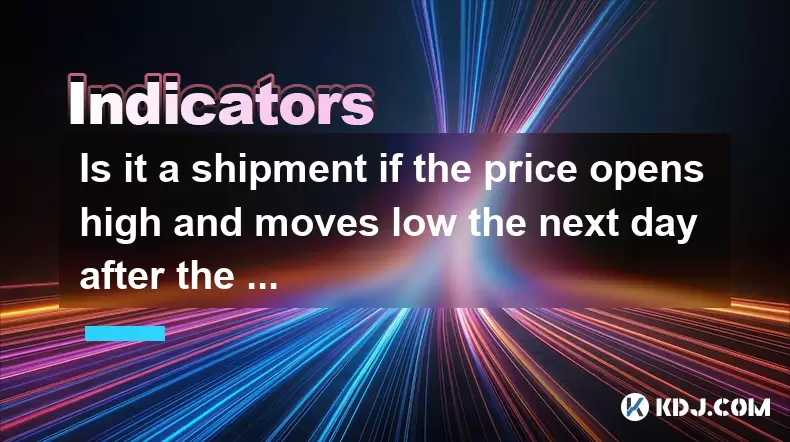
Understanding the Concept of a Shipment in Cryptocurrency Trading
In cryptocurrency trading, the term shipment refers to a scenario where large volumes of an asset are sold off rapidly, often leading to a significant price drop. This is typically associated with whale activity or coordinated selling by major holders. When traders observe certain patterns like a high open followed by a sharp decline and massive volume, they may speculate whether a shipment has occurred.
However, it's crucial to differentiate between genuine shipments and regular market corrections. A shipment implies intentional dumping of assets rather than organic price movement driven by market sentiment or external factors.
What Happens When Price Opens High and Then Drops?
When a cryptocurrency’s price opens significantly higher than the previous close and then sharply declines the following day, especially with huge volume, it can raise red flags among traders. This pattern might suggest that large players took advantage of the upward momentum to sell their holdings at favorable prices.
This behavior aligns with typical whale strategies — buying during dips and selling during rallies. The key elements to look for include:
- A sudden surge in volume that exceeds average levels
- Price rejection at resistance levels
- Immediate bearish follow-through after the high open
These signals, when combined, could point toward a possible shipment, but they should not be interpreted in isolation.
Analyzing Volume: Is It Really a Shipment?
Volume plays a central role in determining whether a downward move qualifies as a shipment. In normal market conditions, increased volume during a price rise indicates strong buying interest. Conversely, high volume during a sharp price drop suggests aggressive selling pressure.
To determine if this constitutes a shipment, consider the following indicators:
- On-chain analysis: Tools like Glassnode or Santiment can show large transfers and exchange inflows.
- Order book depth: Sudden large orders wiping out buy walls can indicate manipulation or whale dumping.
- Timeframe context: Was the price increase part of a broader rally or just a short-lived pump?
The presence of massive sell-side liquidity absorption alongside whale movements is a stronger indicator of a shipment than just price and volume alone.
Identifying Whales and Their Impact on Price Movements
Whales — entities holding large amounts of cryptocurrency — have the power to influence price action dramatically. When whales begin moving funds from wallets to exchanges, it often precedes a dump. Monitoring on-chain metrics becomes essential in such scenarios.
Key signs of whale activity include:
- Large transactions recorded on blockchain explorers
- Unusual spikes in exchange inflows
- Divergence between price and retail sentiment
If these coincide with a high-open-low-close pattern and heavy volume, it strengthens the case for a shipment. However, not every whale movement equates to a full-scale dump; sometimes whales rebalance portfolios or transfer funds without selling.
Technical Patterns That Mimic Shipments
It's important to recognize that several technical patterns can mimic the appearance of a shipment without actually being one. For example:
- Bear traps: Where price surges to trigger stop-losses before reversing sharply.
- False breakouts: Occur when price briefly surpasses resistance only to fall back down.
- Volatility squeezes: Common during low liquidity periods, especially on smaller-cap coins.
These patterns can lead to misleading interpretations. Traders must avoid making impulsive decisions based solely on candlestick formations. Instead, they should combine volume analysis, order book data, and on-chain insights for a more comprehensive view.
How to Respond When You Suspect a Shipment
If you suspect a shipment is underway, here’s what you can do:
- Avoid panic selling unless your risk management plan calls for it.
- Review wallet activity using tools like Etherscan or Blockchain.com explorer to track large movements.
- Analyze exchange inflows through platforms like CryptoQuant or IntoTheBlock.
- Wait for confirmation candles — Look for strong rejection bars or engulfing patterns before assuming trend reversal.
- Set trailing stops if you're still bullish but want protection against further downside.
Reacting too quickly can lead to missed opportunities or unnecessary losses. Always verify multiple sources before taking action.
Frequently Asked Questions
Q: Can a shipment occur without high volume?
A: While high volume is a common characteristic of a shipment, it's not always necessary. A coordinated dump over time or stealth selling can occur with seemingly normal volume, making detection more challenging.
Q: How do I differentiate between a shipment and profit-taking?
A: Profit-taking usually occurs after sustained uptrends and may not involve whale-level movements. Shipments tend to be abrupt, involve large blocks of tokens, and often result in cascading liquidations.
Q: Are all whale movements considered shipments?
A: No. Whales frequently move funds between wallets or exchanges for various reasons unrelated to selling. Only when those movements are followed by substantial selling pressure does it qualify as a shipment.
Q: What tools help detect a shipment early?
A: On-chain analytics platforms like Glassnode Studio, Santiment, and IntoTheBlock offer real-time insights into whale behavior, exchange flows, and large transaction alerts.
Disclaimer:info@kdj.com
The information provided is not trading advice. kdj.com does not assume any responsibility for any investments made based on the information provided in this article. Cryptocurrencies are highly volatile and it is highly recommended that you invest with caution after thorough research!
If you believe that the content used on this website infringes your copyright, please contact us immediately (info@kdj.com) and we will delete it promptly.
- Dogecoin's Crossroads: Buy Signal or Risky Business?
- 2025-06-25 18:25:12
- Pi Network Price Prediction: Navigating the Coin's Breakout and Potential Drop
- 2025-06-25 18:25:12
- Green Minerals, Panther Metals, and the Bitcoin Buy-In: A New Era for Mining?
- 2025-06-25 18:35:13
- Shiba Inu, Dogecoin, and Meme Coins: What's the Hype in 2025?
- 2025-06-25 16:25:12
- JasmyCoin's Wild Ride: 6x Setup or Just a Mirage?
- 2025-06-25 16:25:12
- Mastercard's Stablecoin Integration: Revolutionizing On-Chain Commerce, NY Style
- 2025-06-25 16:45:12
Related knowledge
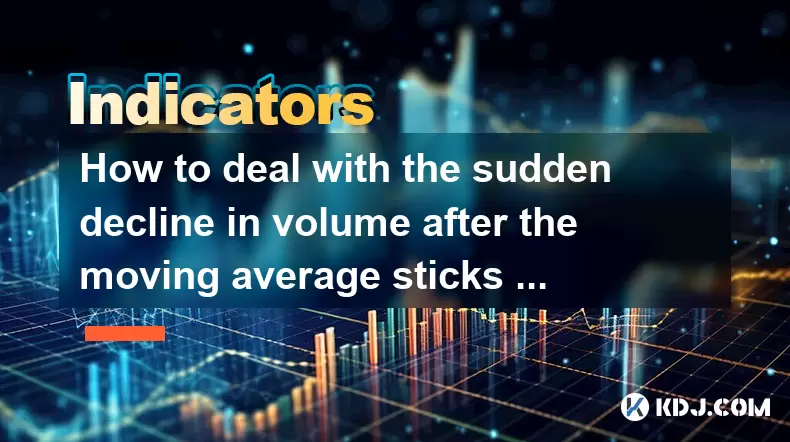
How to deal with the sudden decline in volume after the moving average sticks together?
Jun 25,2025 at 06:35pm
Understanding the Moving Average Convergence and Its ImplicationsIn the world of cryptocurrency trading, moving averages (MAs) are essential tools used to identify trends and potential reversals. When multiple moving averages converge or 'stick together,' it often indicates a period of consolidation or indecision in the market. This phenomenon can be ob...
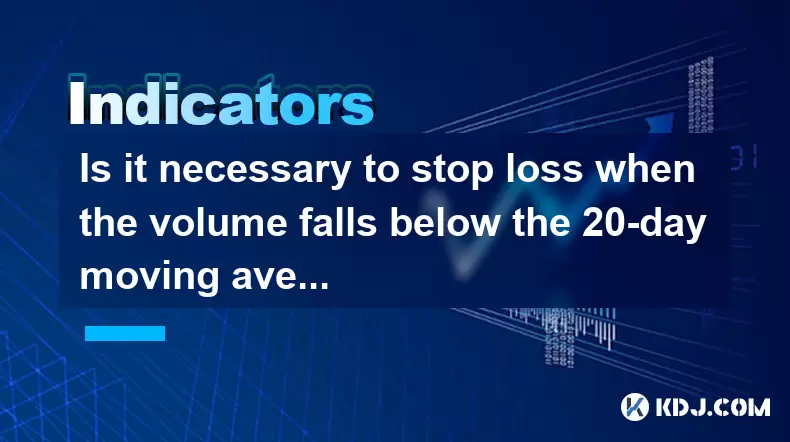
Is it necessary to stop loss when the volume falls below the 20-day moving average?
Jun 25,2025 at 05:00pm
Understanding the 20-Day Moving Average in Cryptocurrency TradingIn cryptocurrency trading, technical analysis plays a pivotal role in decision-making. One of the most commonly used indicators is the 20-day moving average (MA). This metric calculates the average price of an asset over the past 20 days and helps traders identify trends and potential reve...
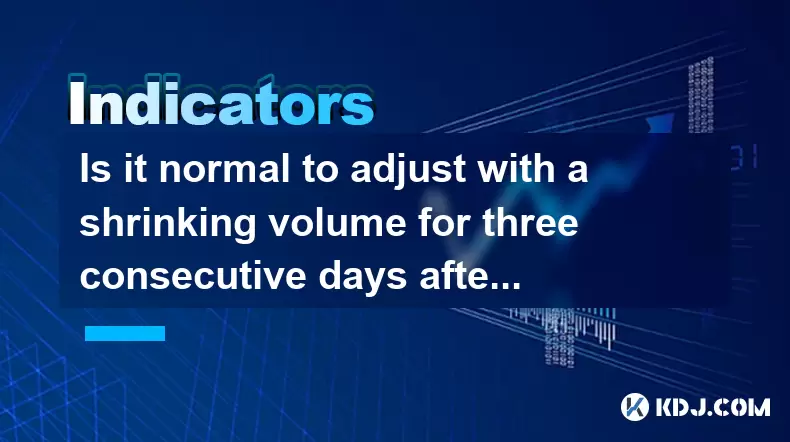
Is it normal to adjust with a shrinking volume for three consecutive days after breaking through the previous high with a large volume?
Jun 25,2025 at 03:49pm
Understanding Volume and Price Relationship in Cryptocurrency TradingIn cryptocurrency markets, volume is a critical metric that reflects the number of assets traded over a specific period. When a cryptocurrency breaks through a previous high with large volume, it typically signals strong buying pressure and market confidence. However, it's not uncommon...
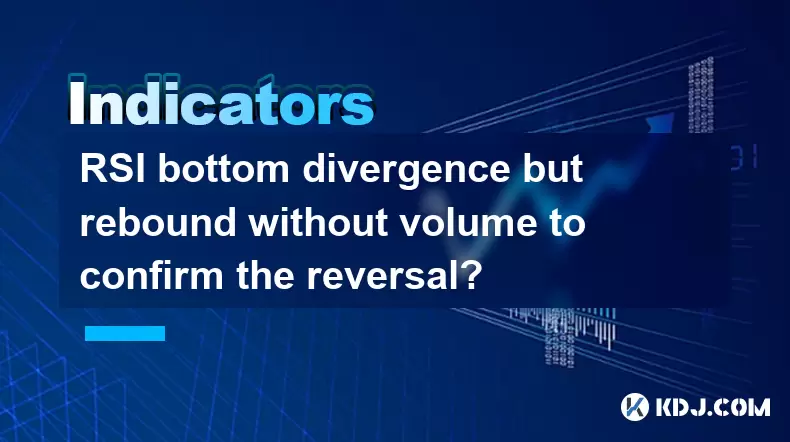
RSI bottom divergence but rebound without volume to confirm the reversal?
Jun 25,2025 at 04:42pm
Understanding RSI Bottom DivergenceRelative Strength Index (RSI) is a momentum oscillator used in technical analysis to measure the speed and change of price movements. RSI bottom divergence occurs when the price of an asset makes a new low, but the RSI does not confirm that low and instead forms a higher low. This pattern suggests weakening downward mo...
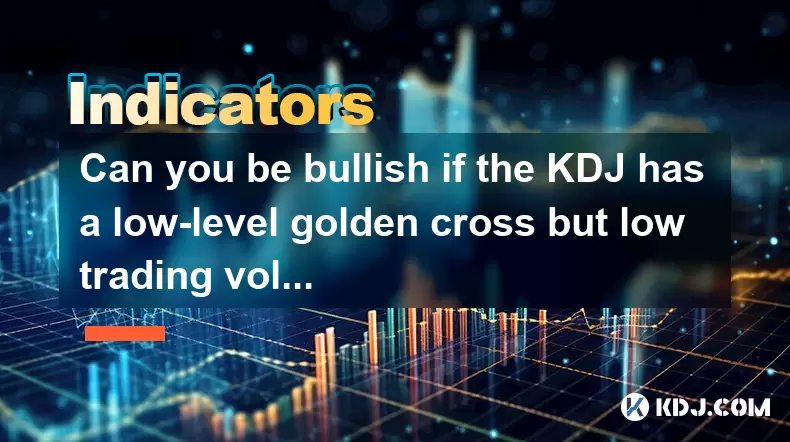
Can you be bullish if the KDJ has a low-level golden cross but low trading volume?
Jun 25,2025 at 03:14pm
Understanding the KDJ Indicator in Cryptocurrency TradingThe KDJ indicator, also known as the stochastic oscillator, is a momentum-based technical analysis tool widely used in cryptocurrency trading. It comprises three lines: the %K line (fast stochastic), the %D line (slow stochastic), and the J line (divergence value). These lines oscillate between 0 ...

Is it a shipment if the price opens high and moves low the next day after the daily limit with huge volume?
Jun 25,2025 at 12:56pm
Understanding the Concept of a Shipment in Cryptocurrency TradingIn cryptocurrency trading, the term shipment refers to a scenario where large volumes of an asset are sold off rapidly, often leading to a significant price drop. This is typically associated with whale activity or coordinated selling by major holders. When traders observe certain patterns...

How to deal with the sudden decline in volume after the moving average sticks together?
Jun 25,2025 at 06:35pm
Understanding the Moving Average Convergence and Its ImplicationsIn the world of cryptocurrency trading, moving averages (MAs) are essential tools used to identify trends and potential reversals. When multiple moving averages converge or 'stick together,' it often indicates a period of consolidation or indecision in the market. This phenomenon can be ob...

Is it necessary to stop loss when the volume falls below the 20-day moving average?
Jun 25,2025 at 05:00pm
Understanding the 20-Day Moving Average in Cryptocurrency TradingIn cryptocurrency trading, technical analysis plays a pivotal role in decision-making. One of the most commonly used indicators is the 20-day moving average (MA). This metric calculates the average price of an asset over the past 20 days and helps traders identify trends and potential reve...

Is it normal to adjust with a shrinking volume for three consecutive days after breaking through the previous high with a large volume?
Jun 25,2025 at 03:49pm
Understanding Volume and Price Relationship in Cryptocurrency TradingIn cryptocurrency markets, volume is a critical metric that reflects the number of assets traded over a specific period. When a cryptocurrency breaks through a previous high with large volume, it typically signals strong buying pressure and market confidence. However, it's not uncommon...

RSI bottom divergence but rebound without volume to confirm the reversal?
Jun 25,2025 at 04:42pm
Understanding RSI Bottom DivergenceRelative Strength Index (RSI) is a momentum oscillator used in technical analysis to measure the speed and change of price movements. RSI bottom divergence occurs when the price of an asset makes a new low, but the RSI does not confirm that low and instead forms a higher low. This pattern suggests weakening downward mo...

Can you be bullish if the KDJ has a low-level golden cross but low trading volume?
Jun 25,2025 at 03:14pm
Understanding the KDJ Indicator in Cryptocurrency TradingThe KDJ indicator, also known as the stochastic oscillator, is a momentum-based technical analysis tool widely used in cryptocurrency trading. It comprises three lines: the %K line (fast stochastic), the %D line (slow stochastic), and the J line (divergence value). These lines oscillate between 0 ...

Is it a shipment if the price opens high and moves low the next day after the daily limit with huge volume?
Jun 25,2025 at 12:56pm
Understanding the Concept of a Shipment in Cryptocurrency TradingIn cryptocurrency trading, the term shipment refers to a scenario where large volumes of an asset are sold off rapidly, often leading to a significant price drop. This is typically associated with whale activity or coordinated selling by major holders. When traders observe certain patterns...
See all articles























































































